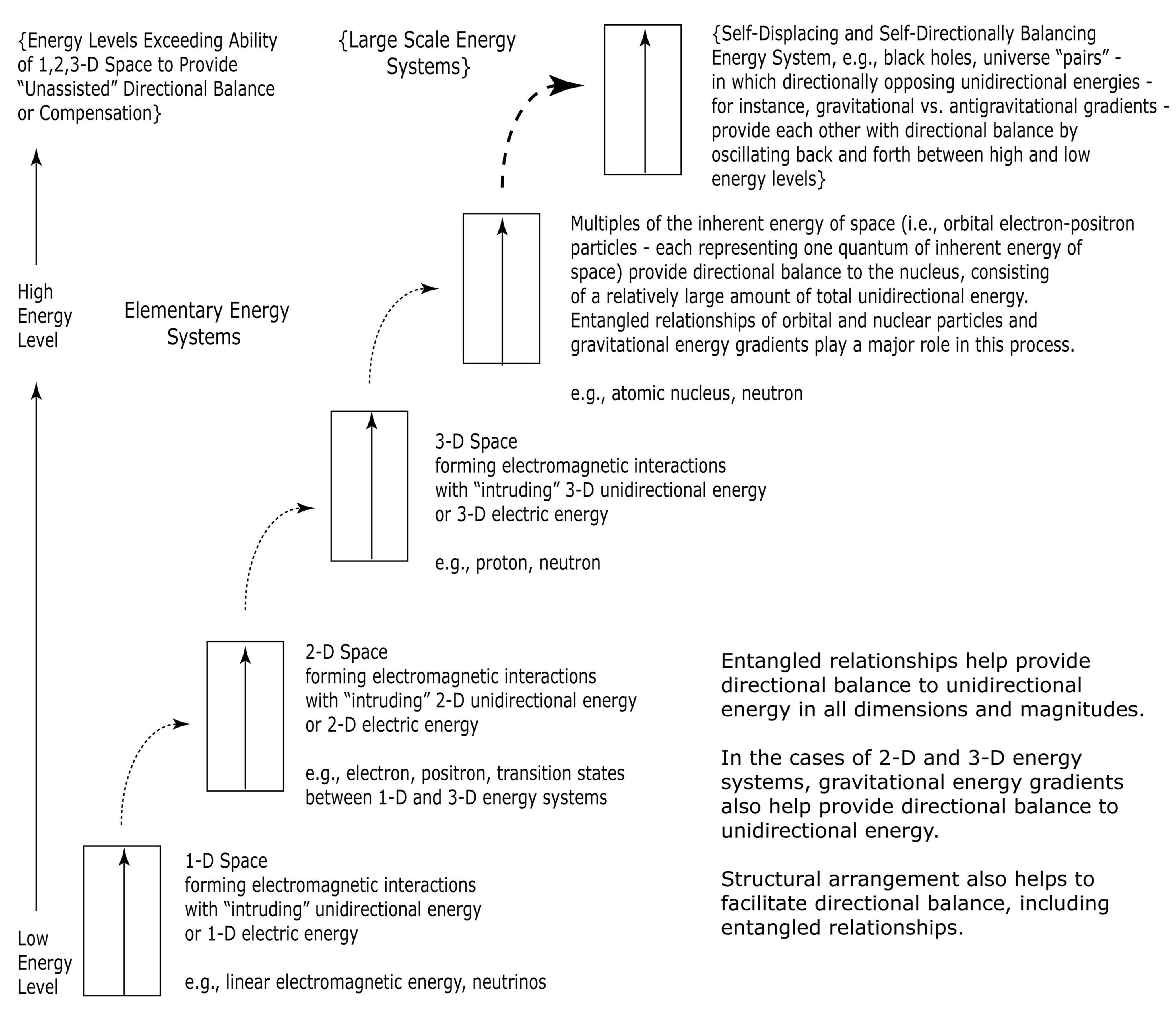 The inherent energy of space is composed of basic 1-D units of bidirectional energy in constant random motion and distribution relative to each other, creating 1-D, 2-D, and 3-D space.
The inherent energy of space is composed of basic 1-D units of bidirectional energy in constant random motion and distribution relative to each other, creating 1-D, 2-D, and 3-D space.
The magnitude of an energy level increases with dimensionality – in other words, 1-D energy represents the lowest energy level, 2-D energy represents the next highest energy level, and 3-D energy represents the highest energy level of the three dimensions considered here.
The inherent energy of space is everywhere – it consists of energy in random motion and distribution, and encompasses everything. All unidirectional energy, or nonrandom energy, exists within space, and must displace the energy of space in order to move to a lower energy level. All unidirectional energy moves toward its lowest possible energy level by displacing either 1-D, 2-D, or 3-D space in the process.
The displacement order of the energy of space, from least to most amount of energy required is as follows:
1) 1-D space requires least amount of energy to displace
2) 2-D space requires more energy to displace (than required to displace 1-D space)
3) 3-D space requires most amount of energy to displace
Unidirectional, or electric, energy will displace 1-D energy first since it requires the least amount of energy to displace.
As electric energy increases in magnitude, and possesses too much energy to be directionally balanced by the 1-D energy of space (i.e., magnetic energy), then it must displace 2-D space. In other words, the electric energy is forced to change its structure from a linear 1-D electromagnetic photon to a higher energy level structure: a 2-D electromagnetic particle (electron-positron particle).
Entangled relationships help provide directional balance to unidirectional energy for all dimensions and magnitudes.
